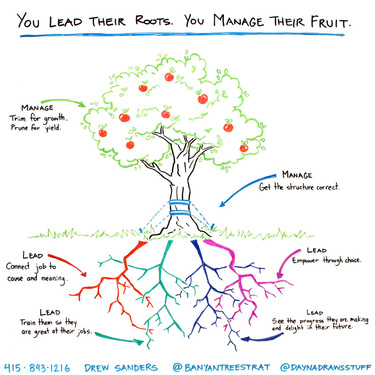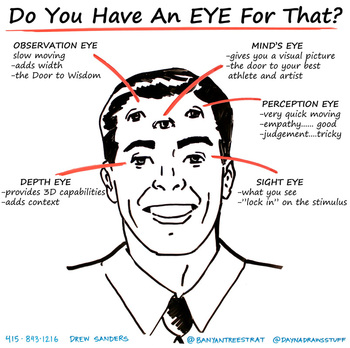|
Got Grit? Good evening, tomorrow is Presidents Day, a national holiday here in the United States and a very convenient 45 day milestone for you to reflect on how the year has started. It is also right on schedule for us to share some of what we have seen in heard so far in 2015. Have you noticed anything different about you and your team so far this year? Are the new behaviors starting to sink in and become habits, or have you and your teammates found road blocks both external and internal to be more of a challenge than you had imagined? We have three “on topic” items for you that are tied into recently published books and white papers that have been of great use to us as we help companies scale. We hope they might benefit you with your team. Motivation, and how most people misdirect and diagnose it is topic number one, Culture, as in where you are from and how it impacts who you are is number two, and we finish with Resiliency which may just be the secret ingredient to individual and team success. It wouldn't be a Branches & Roots Newsletter without some golf, so we close with Tiger Woods and Nick Faldo and some thoughts about your short game. Motivation Susan Fowler has a new book, “Why Motivating People Doesn't Work…and What Does” in which she smartly addresses the challenges with using extrinsic motivational systems within groups. We shared a bit about this last year with our “Tree of Performance” (below) and believe all leaders should be well versed in the 6 levers they can pull to guide a team in this area. Publicly many leaders joke that they expect all members of their team to be “self-motivated”, but privately the best understand how to create a culture where peoples need for Autonomy, Relatedness, and Competency are being met. Digging Deeper: A recent client assignment had us diving further into this topic and how the topics of “Productivity” and “Engagement” can come into play. Engagement is something that does not show up on an income statement relative to other competitors and is elusive to track. Productivity is much easier to track and can be a game changer quarter to quarter. Managers track productivity, they drive productivity, they demand productivity, and this is where the Carrot and Stick extrinsic motivators reign. The challenge is that with every short term effort put in by management to move the productivity needle, a long term engagement withdrawal occurs. In nutritional terms, extrinsic motivation is like a sugar and intrinsic motivation is like a protein. The sugar may work in the short run, but you may crash later, while the other leaves you with fuel to keep going. We created a few thesis statements around these thoughts and would love your feedback relative to your experience with your team whether it is at work, sports, or in a family setting. • “Short Term Productivity from Extrinsic Motivators can lead to a bump in output, but often causes a drop in engagement.” • “Long Term Productivity comes from Intrinsic Motivational needs being met and leads to higher and longer engagement.” Culture Erin Meyer released “The Culture Map” in 2014 and it sat in my stack of books for a few months or I would have written about it sooner, for anyone working with an international team this book has the keys to team building heaven. It turns out that in the midst of the United States trying to make amends for past sins in the “you and I are different” category, the rest of the world has known all along that a French Chef beats a British one and that Indian executives are much less worried about timeliness than the Germans. Meyer has created a global relative scale for culture differences in 8 different categories ranging from timeliness to persuasion to performance review evaluation styles. The results are striking and will allow you to have a better chance of getting to “yes” with your teams once you learn how to look for certain culture “cues”. Digging Deeper On a recent client assignment we had been tasked with helping a company deliver a large project on time with team members in Russia, India, and the United States. Inside the United States we had people who had gone to high school in France, Great Britain, Russia, India and the United States. Skype and WebEx may bring us all together at the touch of a button, but not everyone read “The Little Engine That Could” growing up, and referencing “Glengarry Glen Ross” when trying to get everyone’s attention does not work either. It turns out that things like how long a culture was isolated by geography (like Japan) has a deep impact on how subtle their communication style can be. In Japan, much of what is important in a message is signified by what is left out. Contrast this with the new United States with a short history and a consistent flow of other cultures coming together to build our cities, and you get a culture that leaves nothing out of the message. In the U.S. if you didn't spell it out and repeat it three times, it was not important. Using the advice from “The Culture Map”, we brought the leaders of the team together and walked through how we all viewed the timeline, gave the less powerful communicating cultures room to speak and ended up with a much better idea of how long the final delivery was going to take. If you have had any experiences like this, please let us know so we can compare notes. Resiliency Are you resilient? Why? Do you know enough about your own resiliency process to pass it on to a teammate or a loved one? When presented with the first question, we find many people will answer yes, when asked the latter two, many including us start to stammer. Our research into this topic showed that most of us attribute the characteristics of grit, determination and pluck as God given gifts that you either have or you don’t. Worse yet, they are often portrayed as those things you build while taking a beat down of rejection either socially or on a sports field. This struck us as odd and that while rejection may help you build a nice pile of coal in your stomach to use for building your own fire, the output of stress on your system and the smell of your smoky exhaust doesn't really make us want to be around that person. Think Russell Crow yelling at the crowd in Gladiator, “ARE YOU NOT ENTERTAINED”. He may be interesting to watch on TV, but do you want have lunch with that person or tell your son or daughter this is the pathway to building resiliency. It turns out as in most social science areas, research has been funded to study the extremes on the human curve which then affords us in the middle a few nuggets from which to learn. Dr. Wayne Hammond from the University of Calgary has been working with segments of the population with severe disabilities, and senior citizens recovering from the loss of a spouse all with an eye for helping them adapt and build a resilient foundation. In recent years he has worked with the Province of Alberta to create a mentor program (click to view) to assist family members of all ages to engage in a healthy way to mentor. (It is nice to think we may have more tools in our belt than “that’s OK Jimmy, suck it up, it’s good for you.) Recently Hammond has brought to market an offering for parents called Strengths Based Parenting which allows parents to screen for resiliency in their children and then gives them an improvement process to follow. You can also take a look at a short white paper and let us know your thoughts. Our interest in this topic is a combination of helping our own children develop and unfold into functioning adults, and in response to a disturbing trend we are noticing with the flagging performance of young adults in the ages of 19 to 25. With respects to the 6 year sub cohort of the Millennials it would be hard to suggest they haven’t been praised enough. So where is the grit, where is the drive, where is the joy in doing something hard? We don’t have the answers, but are charged with finding the answers as our clients work places are filling up with young professionals and someone else’s problem has just become our problem. If it takes a village then let’s form one and team up. Golf Thoughts: What You Have in Common with Tiger Woods
Tiger’s gluts have received enough coverage in the past few weeks so we will leave his ailing back alone. What we do want to bring to your attention is that what Nick Faldo shared right away on Tiger’s first hole at Torrey Pines two weeks ago. CLICK FOR VIDEO Nick talked about what Tiger was focused on with his chips and pitches and as you head into your golfing season see if you can take his advice with you as it is worth at least 4 shots per round. The word focus is difficult describe in print which is why we drew our 5 eyed man (below) to help you understand that the focus Nick is describing isn't your eye’s focus on the ball, you still have to “look” at the ball if you want to hit it, but you need to have your “mind’s eye” or what Nick calls your “focus” on the trajectory of the shot you want to hit. The moment your focus is on the ball with short shots is the moment you start to play like Tiger Woods. It may seem easy, or incredibly hard, but it should change how you practice and how you think every shot you play. Is your focus on the ball (bad idea), or is your focus on the trajectory of the shot you want to hit (good idea). All things aside, this latest chapter of Tiger’s career is fascinating to watch, and when he adds a dash of humility to his communication, he may end up with the entire golfing world rooting for him to win another major championship.
0 Comments
|
Archives
November 2023
Categories
All
Complete Annual Newsletter Volumes
|



